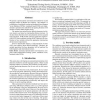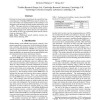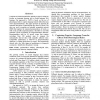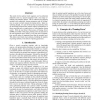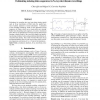INTERSPEECH
2010
13 years 6 months ago
2010
A new recurrent neural network based language model (RNN LM) with applications to speech recognition is presented. Results indicate that it is possible to obtain around 50% reduct...
INTERSPEECH
2010
13 years 6 months ago
2010
We present a pronunciation error detection method for second language learners of English (L2 learners). The method is a combination of confidence scoring and landmark-based Suppo...
INTERSPEECH
2010
13 years 6 months ago
2010
We propose a novel approach to modeling prosodic features. Inspired by Joint Factor Analysis model (JFA), our model is based on the same idea of introducing subspace of model para...
INTERSPEECH
2010
13 years 6 months ago
2010
Decision tree-based context clustering is the essential but timeconsuming part of building HMM-based speech synthesis systems. The widely used implementation of this technique is ...
INTERSPEECH
2010
13 years 6 months ago
2010
Computer-Assisted Pronunciation Training System (CAPT) has become an important learning aid in second language (L2) learning. Our approach to CAPT is based on the use of phonologi...
INTERSPEECH
2010
13 years 6 months ago
2010
The search for the optimal word sequence can be performed efficiently even in a speech recognizer with a very large vocabulary and complex models. This is achieved using pruning m...
INTERSPEECH
2010
13 years 6 months ago
2010
Techniques for recording the vocal tract shape during speech such as X-ray microbeam or EMA track the spatial location of pellets attached to several articulators. Limitations of ...
INTERSPEECH
2010
13 years 6 months ago
2010
This paper presents an analysis of phoneme durations of emotional speech in two languages: Dutch and Korean. The analyzed corpus of emotional speech has been specifically develope...
INTERSPEECH
2010
13 years 6 months ago
2010
We carry out two studies on affective state modeling for communication settings that involve unilateral intent on the part of one participant (the evoker) to shift the affective s...
INTERSPEECH
2010
13 years 6 months ago
2010
In this work, the RWTH automatic speech recognition systems for English and German for the second Quaero evaluation campaign 2009 are presented. The systems are designed to transc...

